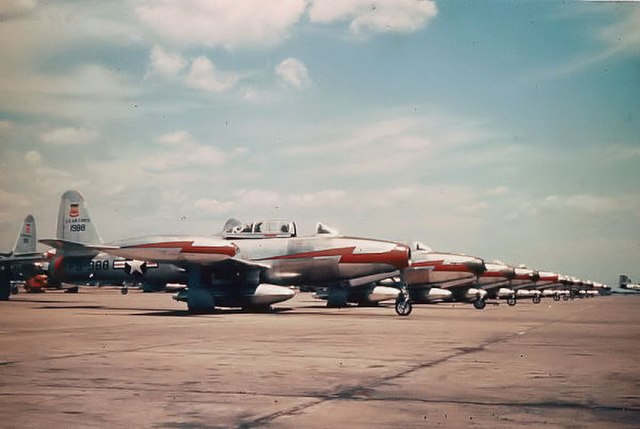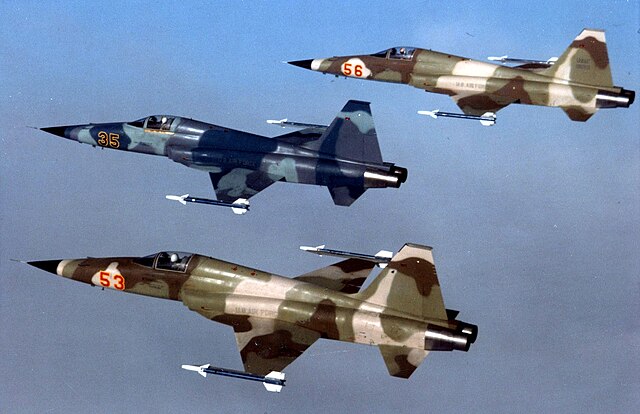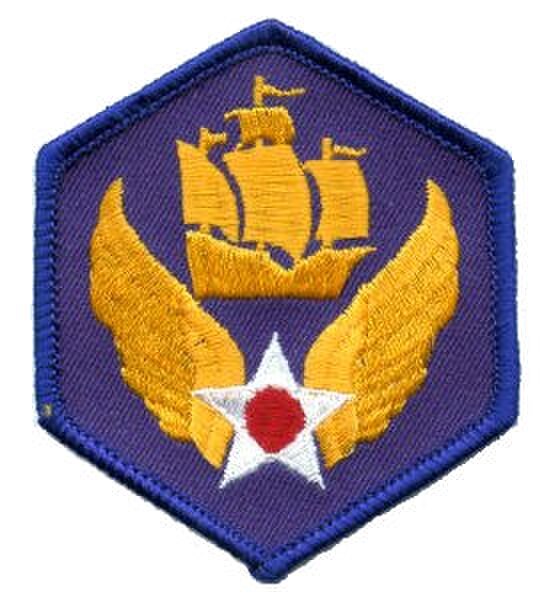The Third Air Force (Air Forces Europe) (3 AF) is a numbered air force of the United States Air Forces in Europe - Air Forces Africa (USAFE-AFAFRICA). Its headquarters is Ramstein Air Base, Germany. It is responsible for all U.S. air forces in Europe and Africa, and operations and support activities in the U.S. European Command and U.S. Africa Command's areas of responsibility.
It also has a unique mission as the U.S. military's primary liaison to the British government, which is conducted through the command's 3 AF-UK headquarters at RAF Mildenhall, England.
F-84Gs of the 77th Tactical Fighter Squadron, RAF Wethersfield
McDonnell F-4D-28-MC Phantom Serial 65-0738 at RAF Bentwaters, September 1972.
Northrop F-5E Tiger II Serials 73-0953, 0956 and 0985 of the 527th TFTAS in formation at RAF Alconbury, 1977
A-10A Serial 81-0991 at RAF Bentwaters.
A Numbered Air Force (NAF) is a type of organization in the United States Air Force that is subordinate to a major command (MAJCOM) and has assigned to it operational units such as wings, squadrons, and groups. A Component Numbered Air Force (C-NAF) has the additional role as an Air Force Component Command exercising command and control over air and space forces supporting a Unified Combatant Command. Unlike MAJCOMs, which have a management role, a NAF is a tactical organization with an operational focus, and does not have the same functional staff as a MAJCOM. Numbered air forces are typically commanded by a major general or a lieutenant general.
World War II Air Districts and Numbered Air Forces.
Image: Sixth Air Force Emblem (World War II)
Image: 25th Air Force Shield
Image: Eastern Air Defense Force patch








